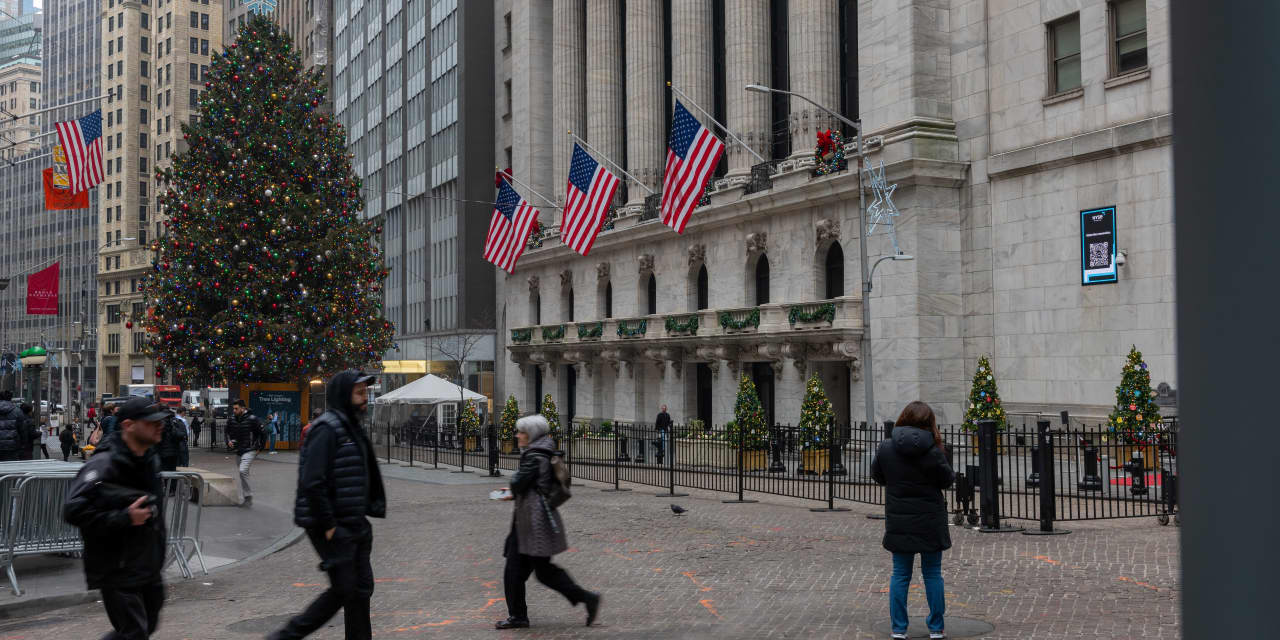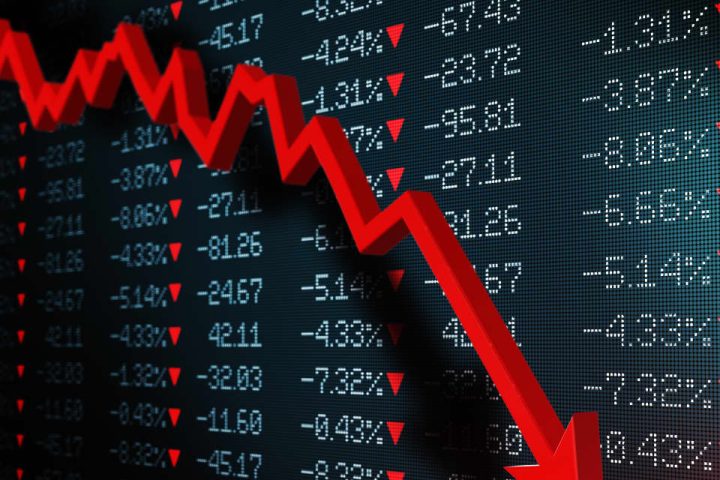U.S. stocks finished lower on Wednesday after minutes from the Federal Reserve’s December meeting showed policymakers had a high level of uncertainty around their interest-rate projections and did not rule out further rate hikes.
How stock indexes traded
-
The S&P 500
SPX
ended down by 38.02 points, or 0.8%, at 4,704.81 for its third straight session of declines. -
The Dow Jones Industrial Average
DJIA
closed down by 284.85 points, or 0.76%, at 37,430.19. -
The Nasdaq Composite
COMP
finished down by 173.73 points, or 1.18%, at 14,592.21 for its fourth consecutive session of declines.
On Tuesday, the Dow rose less than 0.1% to a record close of 37,715.04, while the S&P 500 declined 0.6% to 4,742.83, and the Nasdaq Composite slumped 1.6% to end at 14,765.94.
What drove markets
Minutes from the Fed’s Dec. 12-13 meeting, released on Wednesday, showed that almost all the central bank’s officials had penciled some easing into their forecasts for 2024. However, an “unusually elevated degree of uncertainty” was attached to those forecasts.
Fed-funds futures traders pulled back on the likelihood of a first interest-rate cut arriving by March. However, they clung to a high likelihood of more rate cuts from the Fed by year-end than the three quarter-point moves implied in policymakers’ December projections.
The message from the Fed’s December meeting is that policymakers “are behind the curve on how quickly inflation has fallen,” said Luke Tilley, chief economist of Delaware-based Wilmington Trust, which has roughly $80 billion in assets under management. “While the minutes are a good reflection of Fed officials being cautious, we would expect them to cut more than three times as more inflation data comes in low.”
Investors have been counting on easing inflation to help motivate the Fed to cut borrowing costs swiftly in 2024 — a factor that helped the tech-heavy Nasdaq Composite surge 43% last year, with a large chunk of that rise coming over the final two months of 2023. Hopes that companies like Microsoft
MSFT,
and Nvidia
NVDA,
will benefit from the increased adoption of artificial intelligence also contributed to the rally.
“It seems the near-term momentum from December was based primarily on the perception of a change in monetary policy, yet the reality is that economic data may not allow for the ‘pivot’ as soon as markets would like,” said Brian Mulberry, client portfolio manager at Chicago-based Zacks Investment Management, which manages $13.9 billion in assets. The policy-setting Federal Open Market Committee “remains committed to 2% inflation as a target, and while there has been real progress in that direction, Core PCE [or the Fed’s preferred inflation gauge] is still well above 2%, leading us to believe that rates could still remain higher for longer than currently priced in.”
The first trading day of the year on Tuesday saw the Nasdaq shed 1.6%, its biggest drop in more than two months, while the broader S&P 500 fell 0.6%. A downgrade of Apple
AAPL,
to underweight from neutral by Barclays worsened market sentiment on the view that some big-tech valuations appeared stretched and that stocks looked overbought following a nine-week winning streak by the S&P 500.
“What we’ve seen in the last couple of months prior to this year is optimism for the best potential outcomes in rates and the economy. It was almost stupidly good and wasn’t going to persist forever,” said John Luke Tyner, a portfolio manager at Alabama-based Aptus Capital Advisors, which manages $4.25 billion.
In early 2024, “the data is not going to degrade fast enough to get a bunch of Fed rate cuts in the first half of this year,” Tyner said via phone.
In U.S. economic updates on Wednesday, job openings slid to a 32-month low of 8.8 million in November from a revised 8.9 million in the prior month, the U.S. Bureau of Labor Statistics said in its JOLTS report. That’s seen as another sign that a prolonged hiring boom is fading in response to higher interest rates.
Meanwhile, data showed U.S. economic activity in the manufacturing sector contracted in December for the 14th consecutive month, according to the Institute for Supply Management. ISM’s U.S. manufacturing PMI rose to 47.4 in December from 46.7 in November; any number below 50 reflects a shrinking sector.
Companies in focus
-
Shares of Apple Inc.
AAPL,
-1.27%
finished down by 0.8% on Wednesday, after suffering their biggest drop in four months during Tuesday’s session following a downgrade by Barclays. -
Moderna Inc.’s stock
MRNA,
+0.07%
closed down by 3.5% after leading the S&P 500’s gainers on Tuesday. Oppenheimer has upgraded the stock to the equivalent of buy and said it expects the biotech company to have five products approved by 2026. -
Tesla Inc.’s stock
TSLA,
-0.22%
ended down by 4% on Wednesday, handing shares of the electric-vehicle company their fourth straight day of declines after the firm was surpassed as the EV-selling leader by China’s BYD Co.
002594,
-0.08% .
Jamie Chisholm contributed.
Read the full article here







